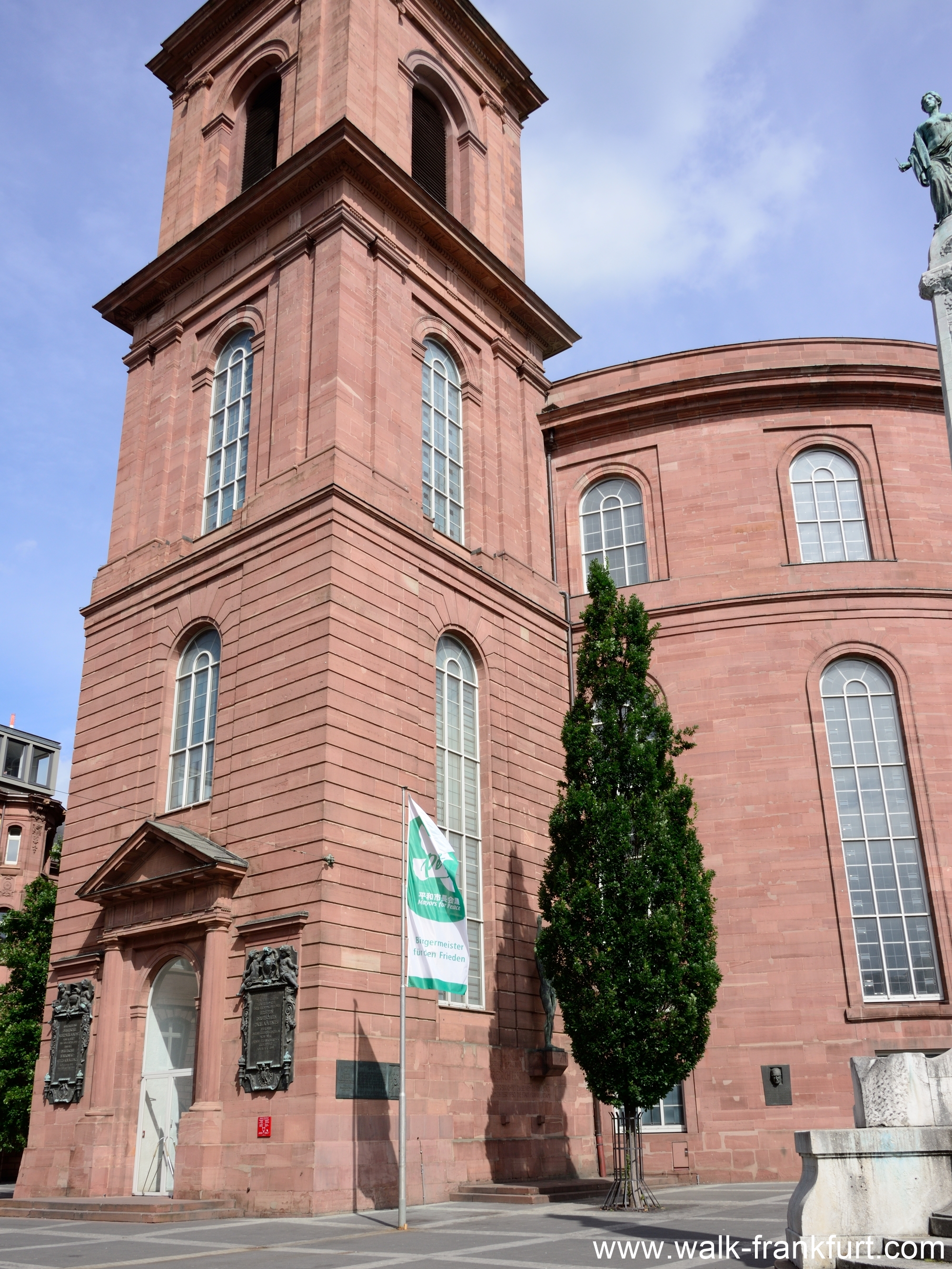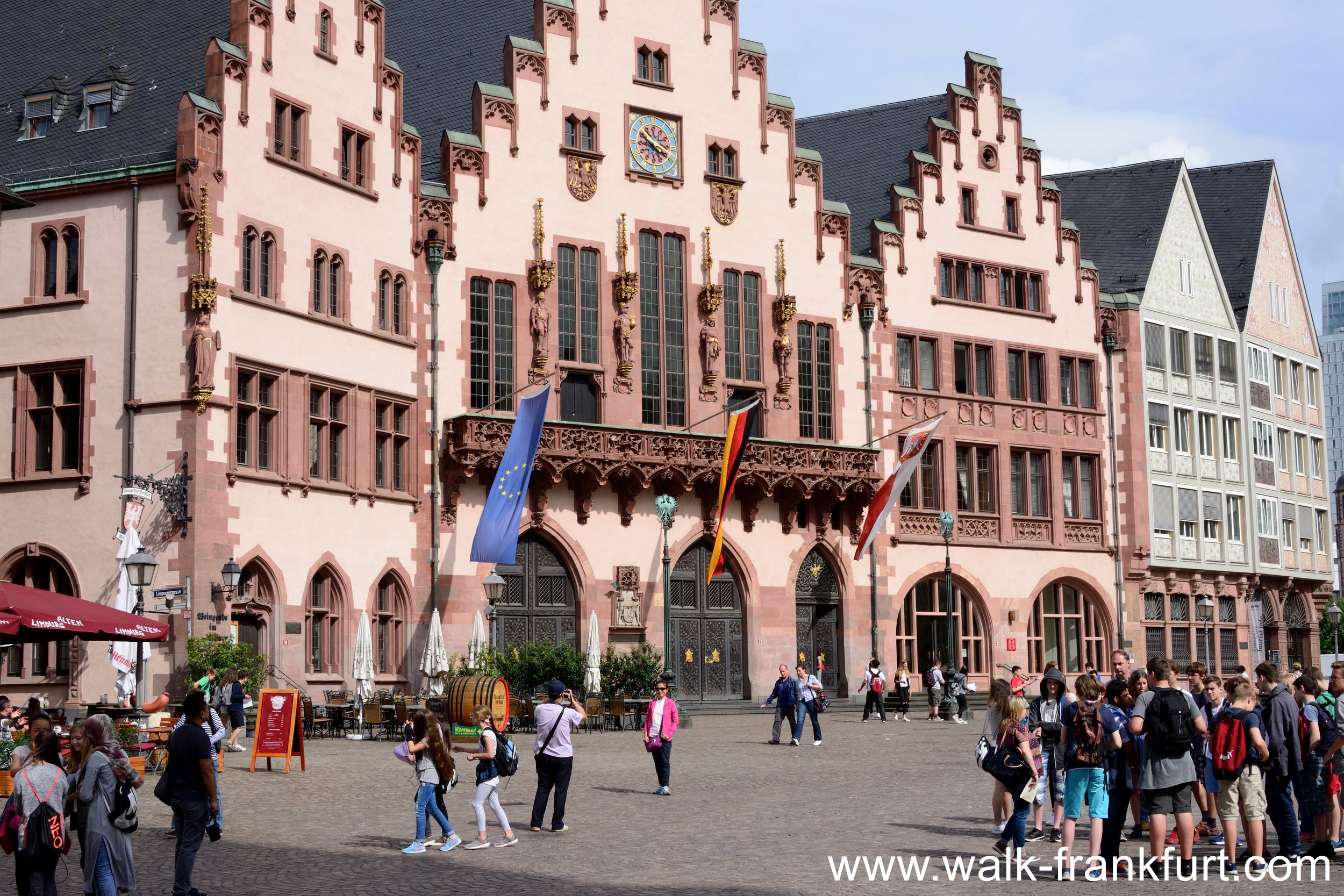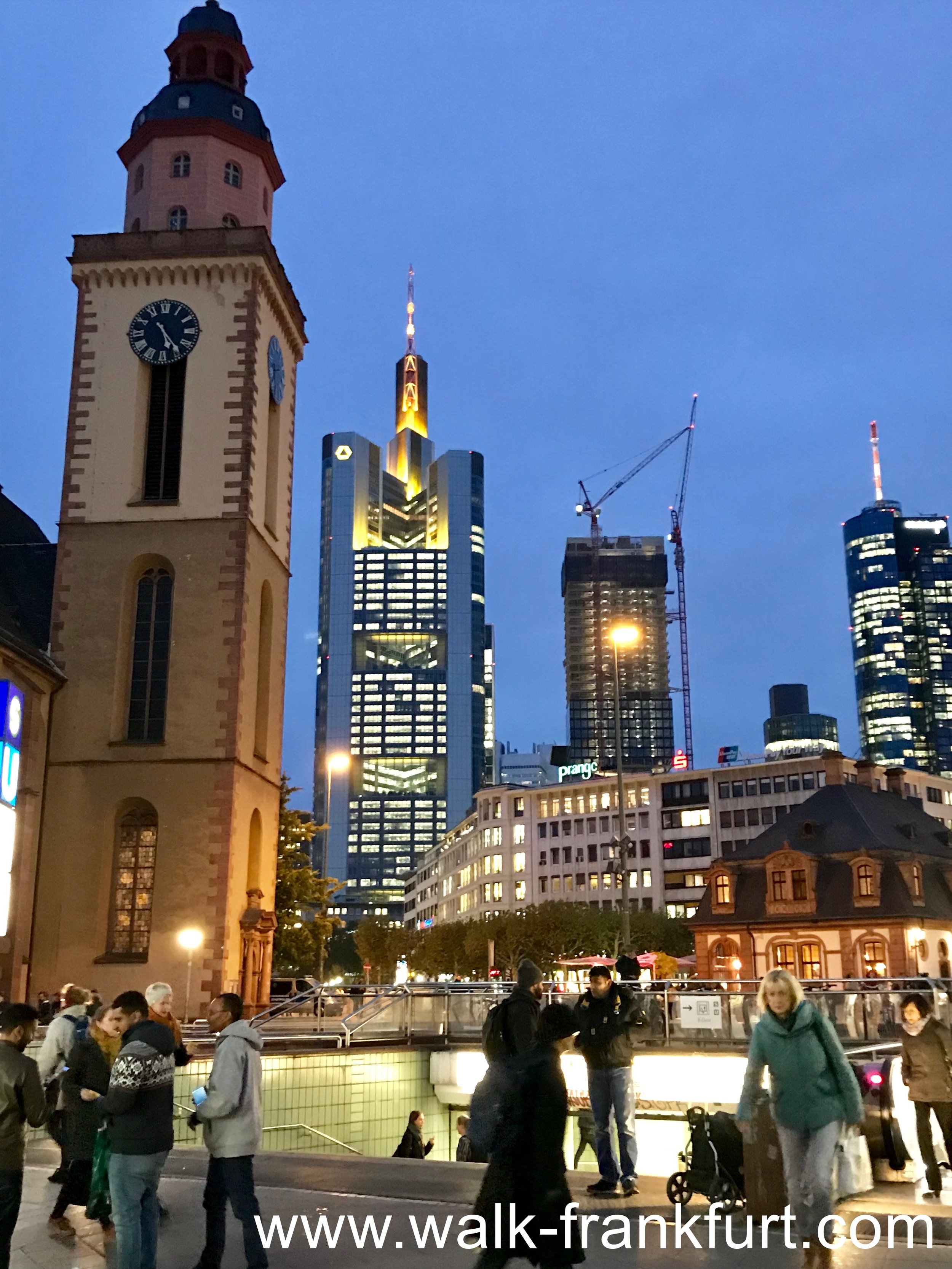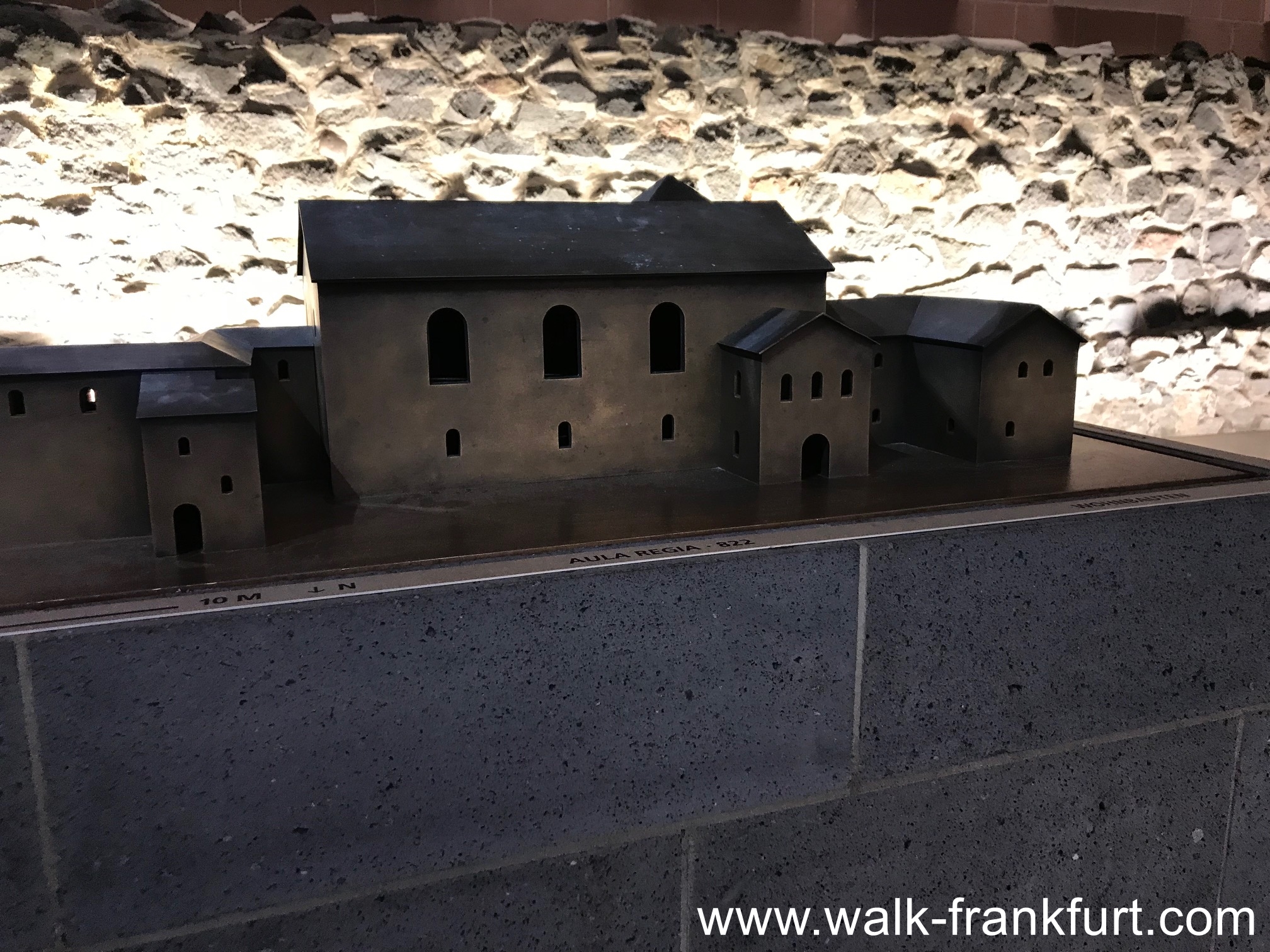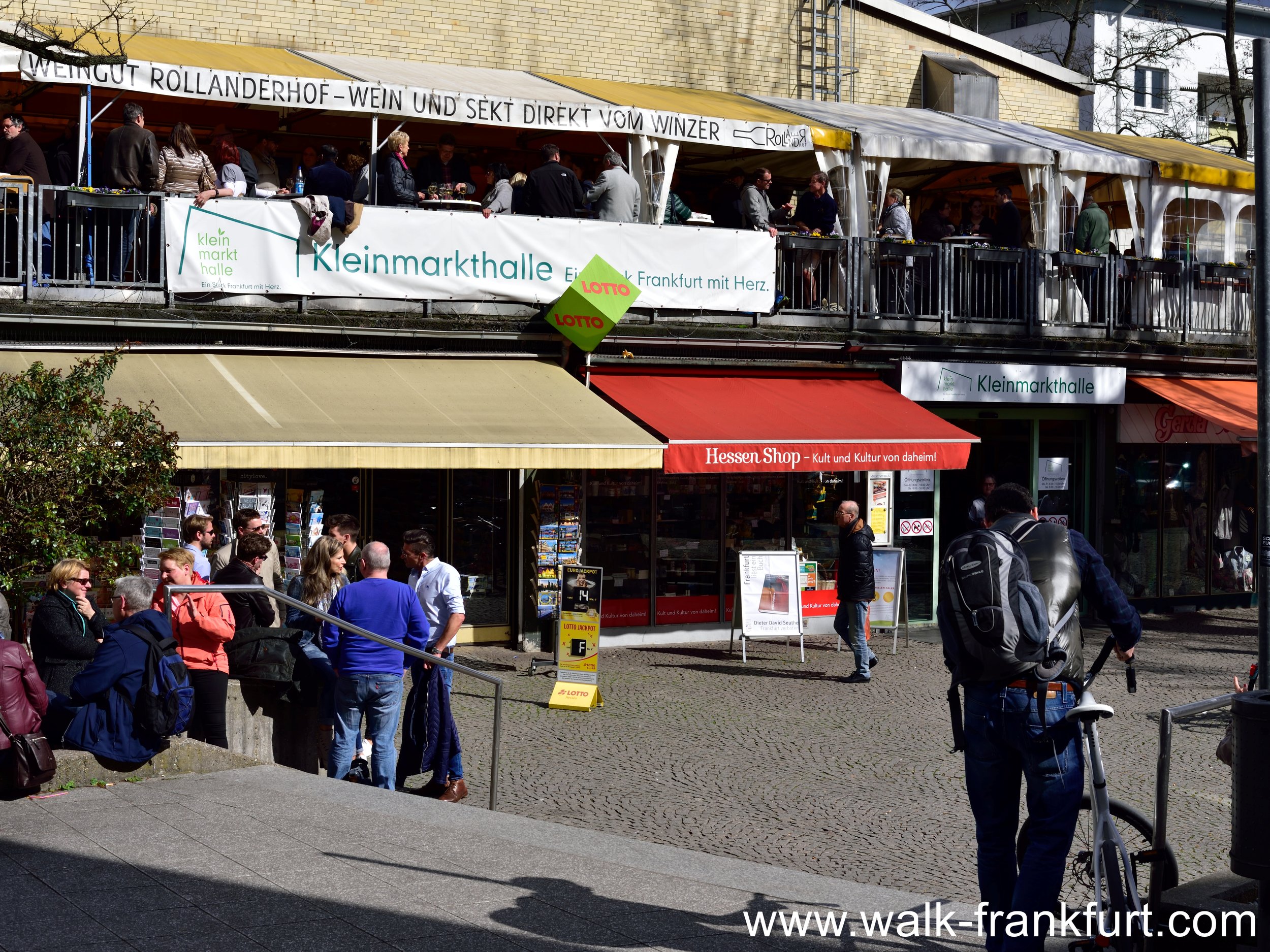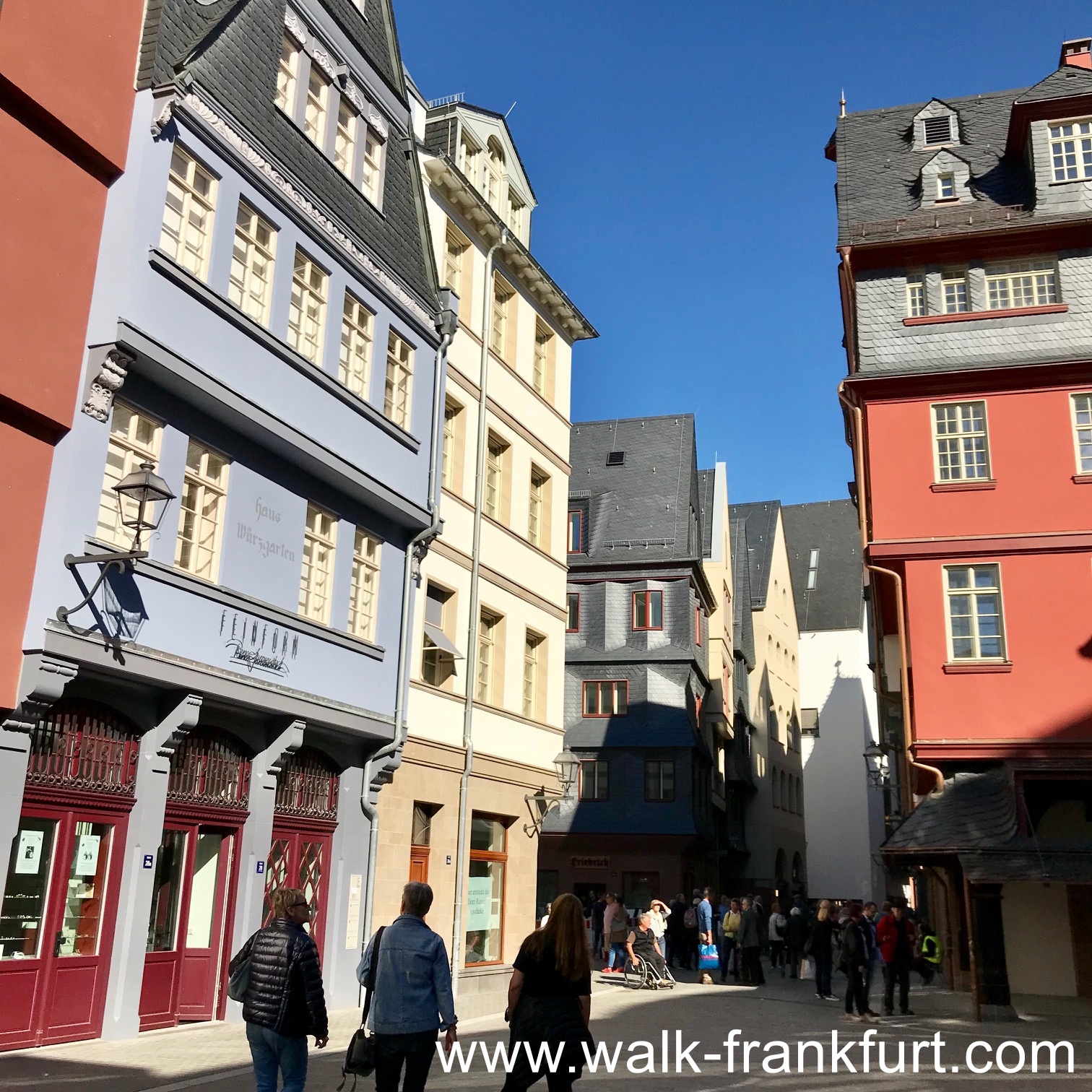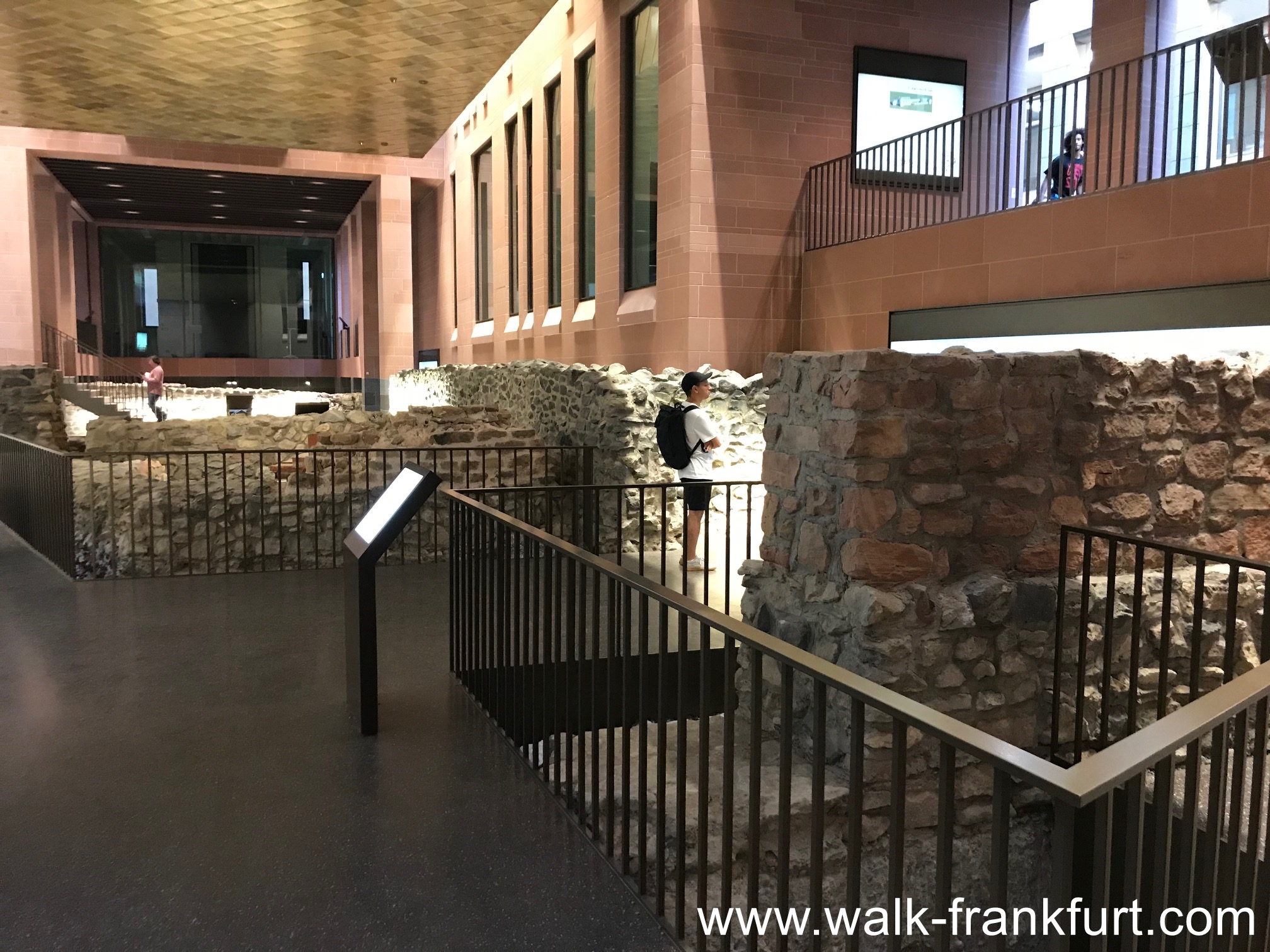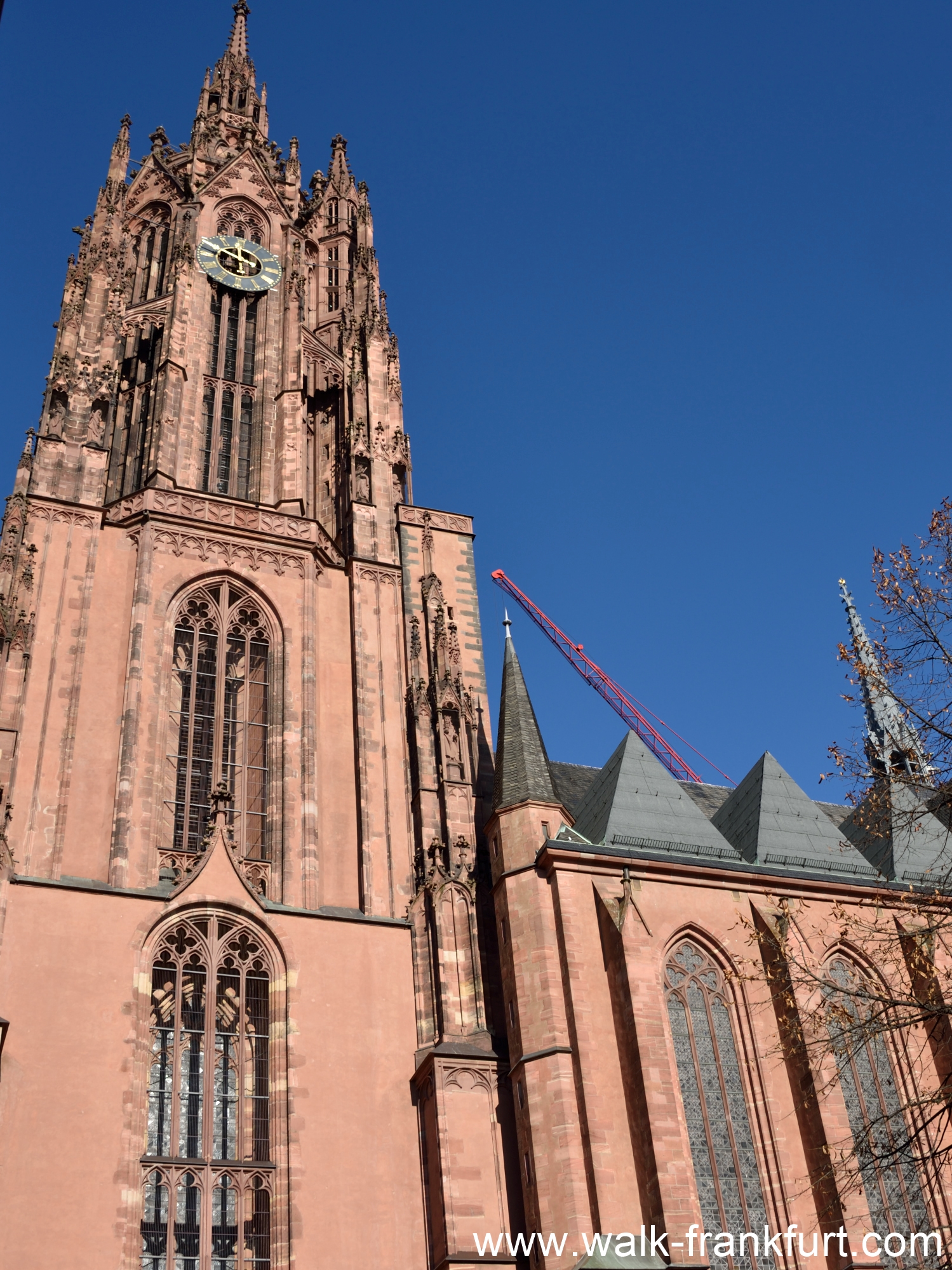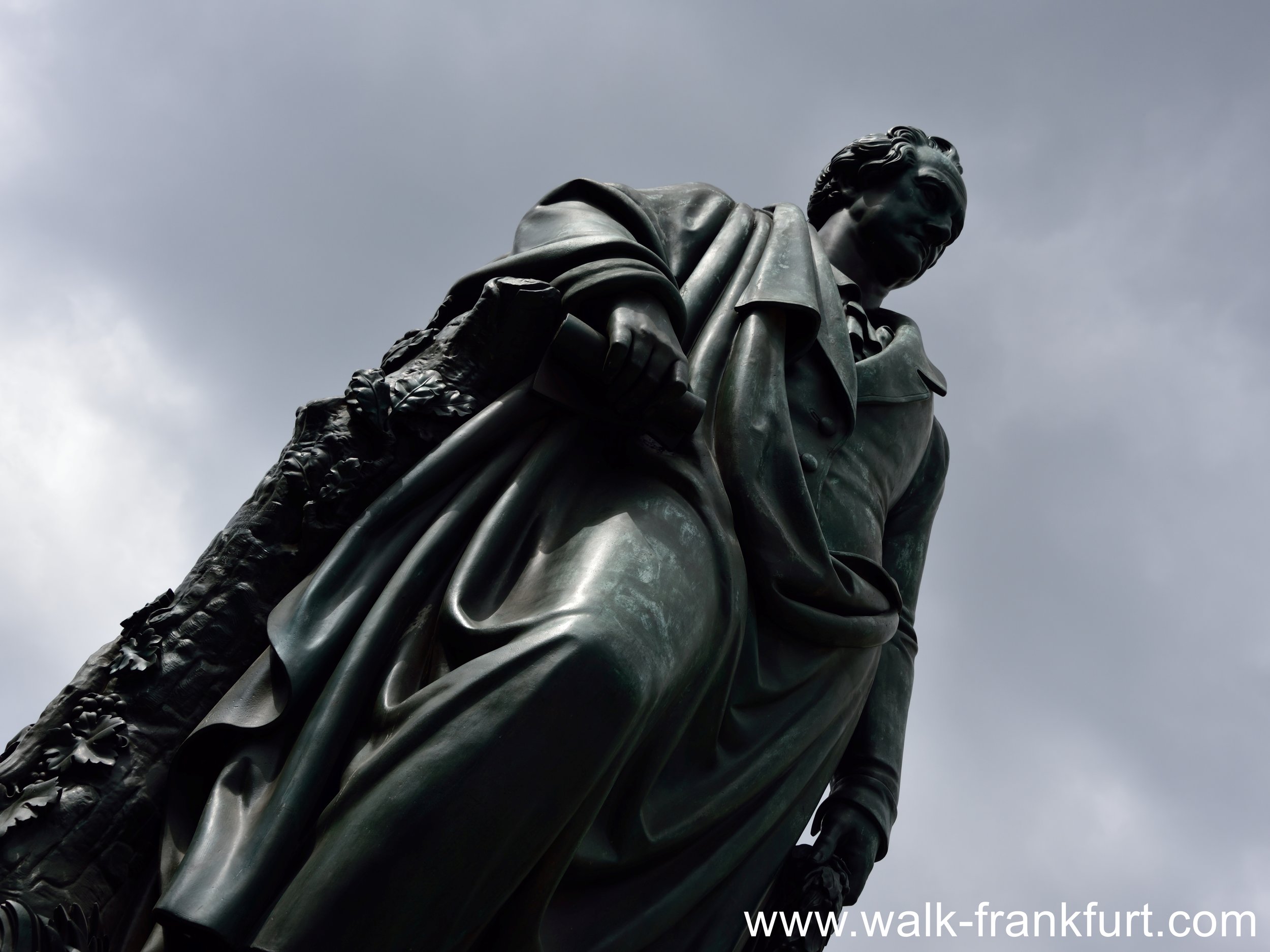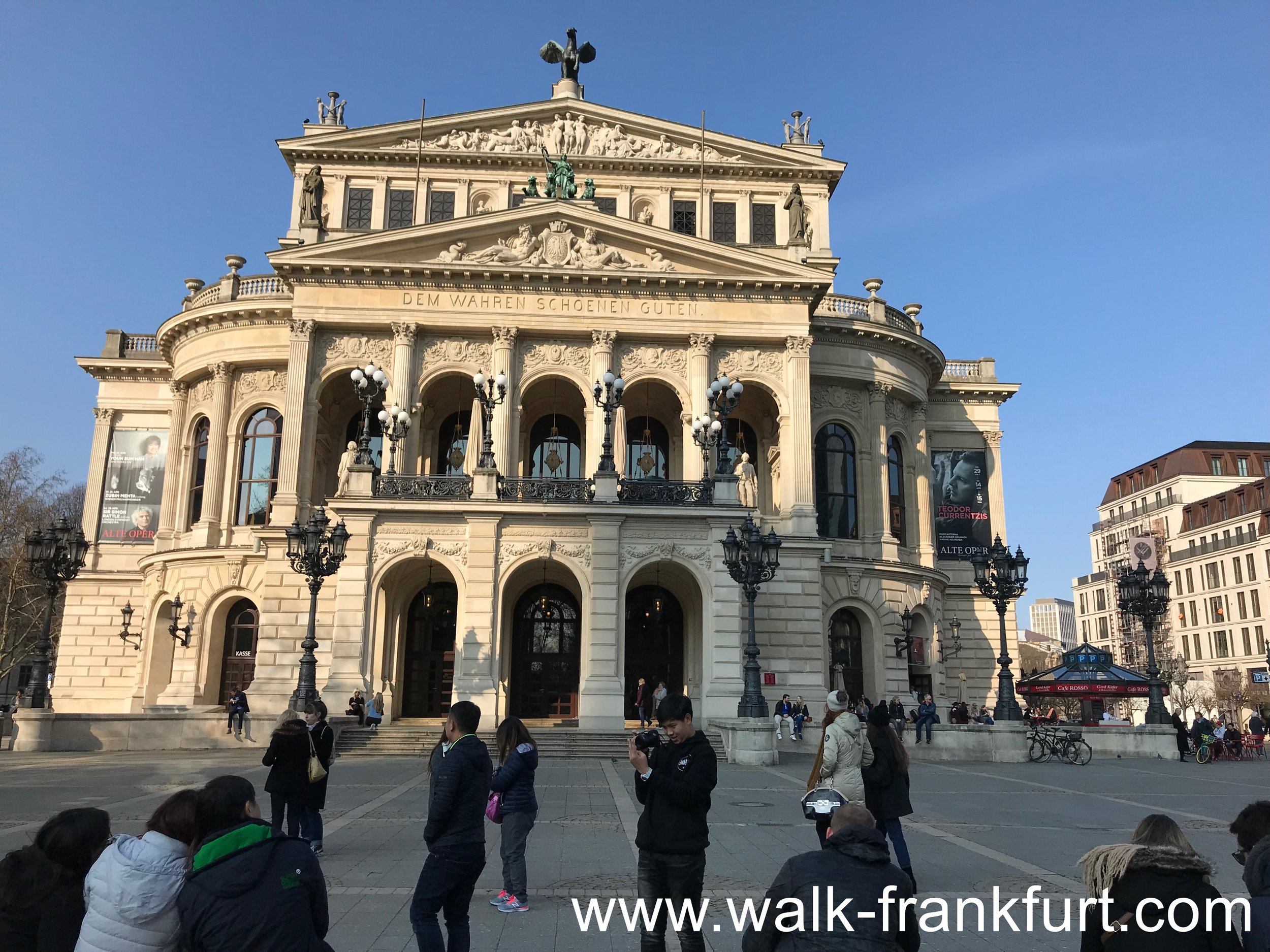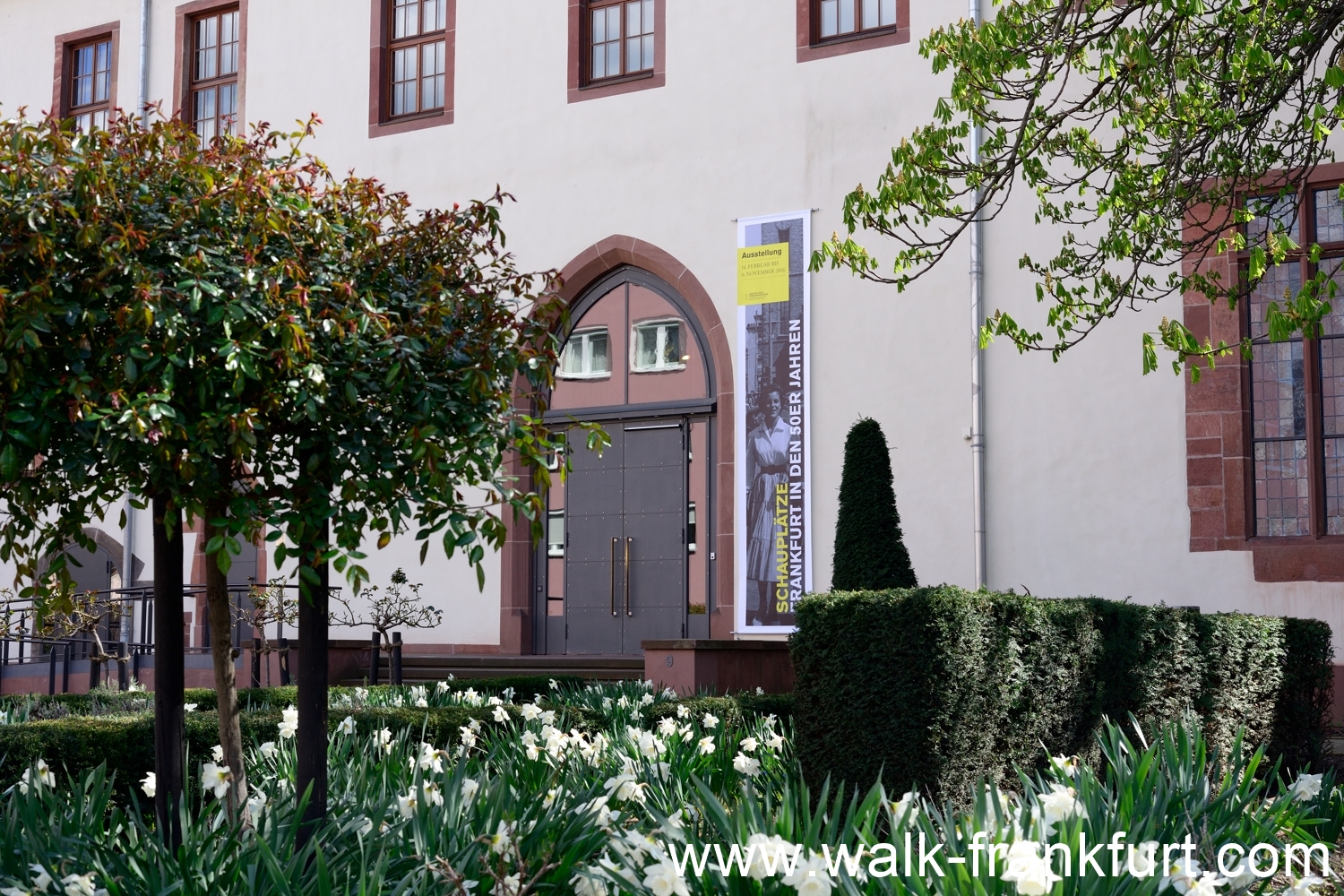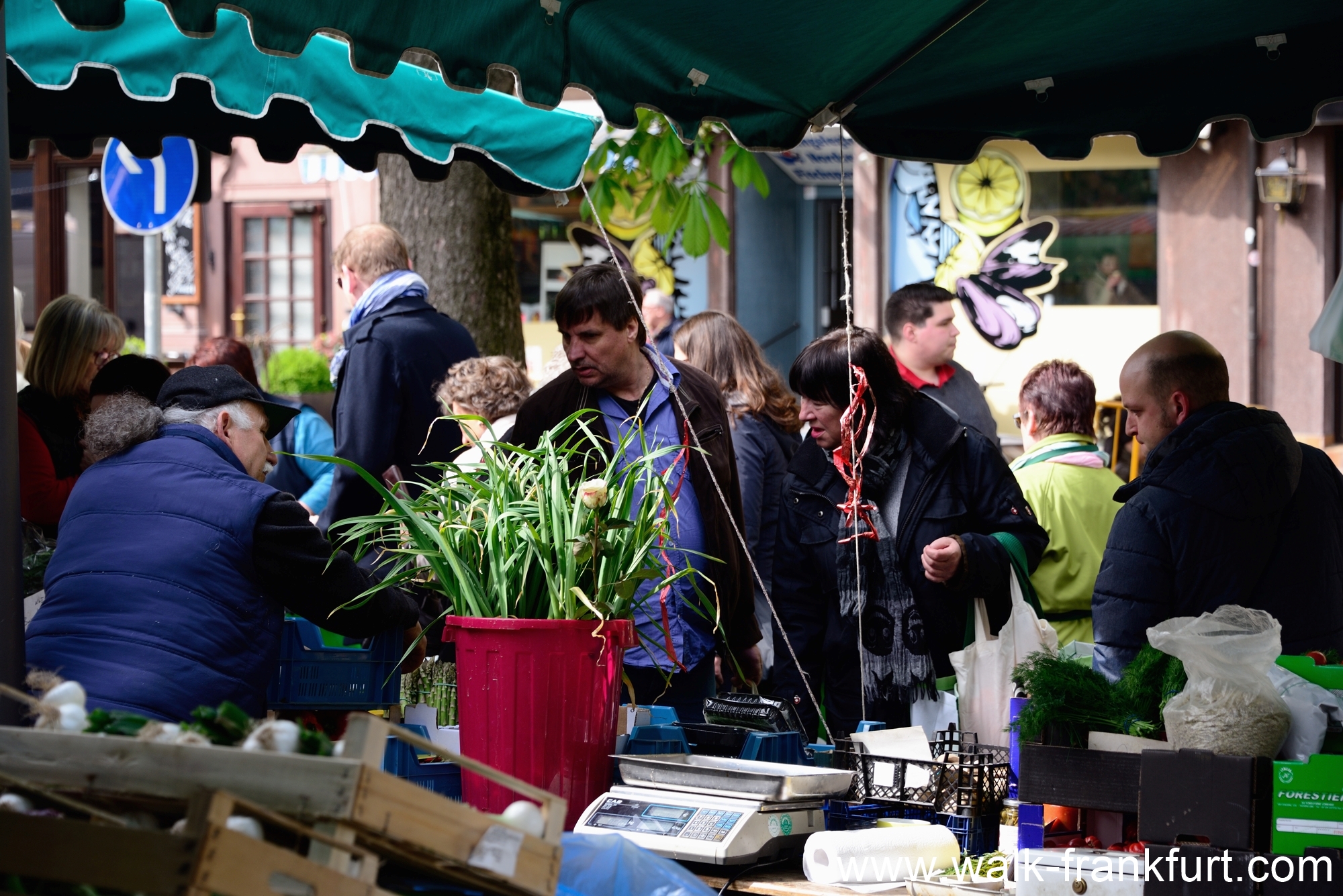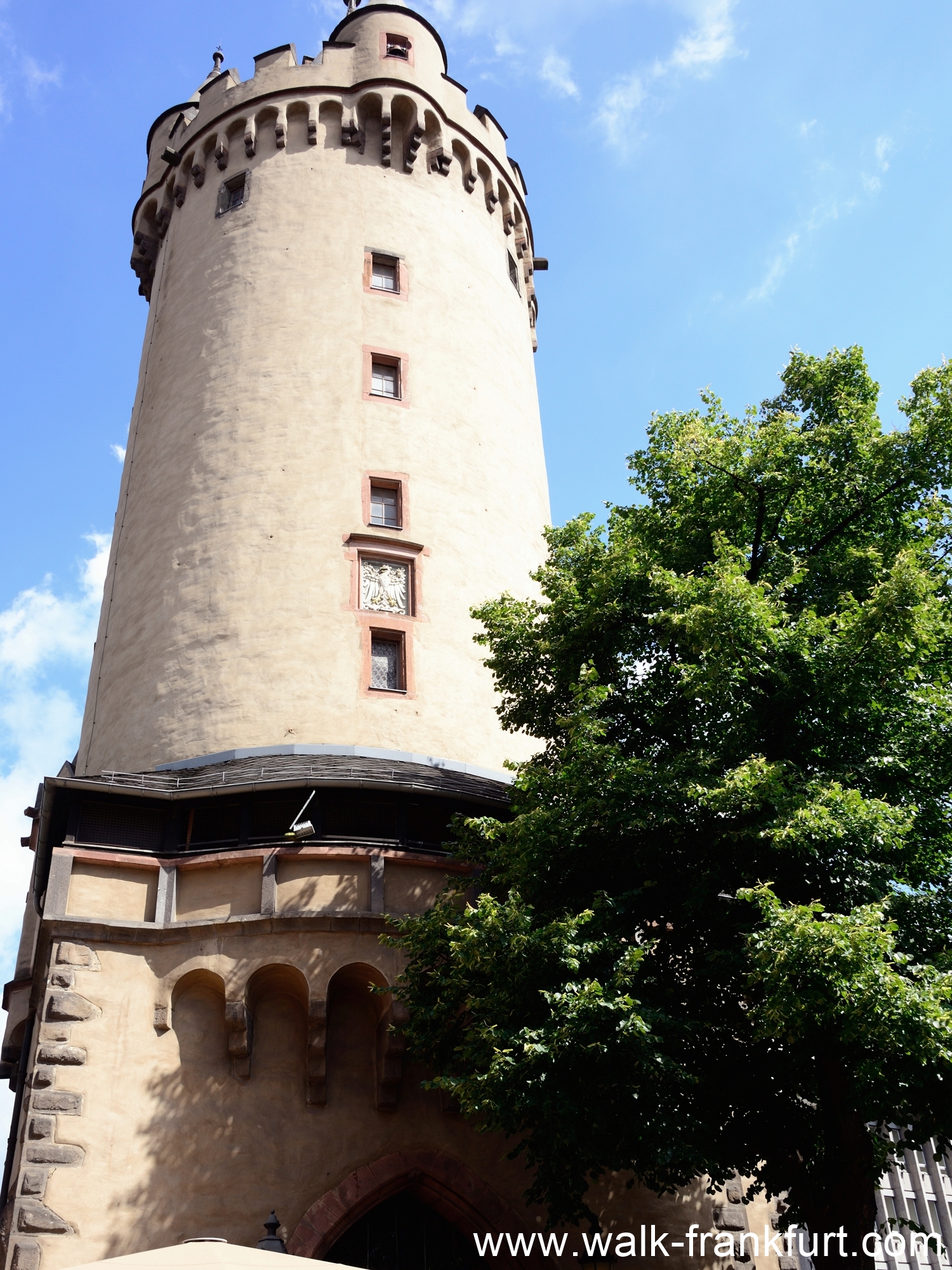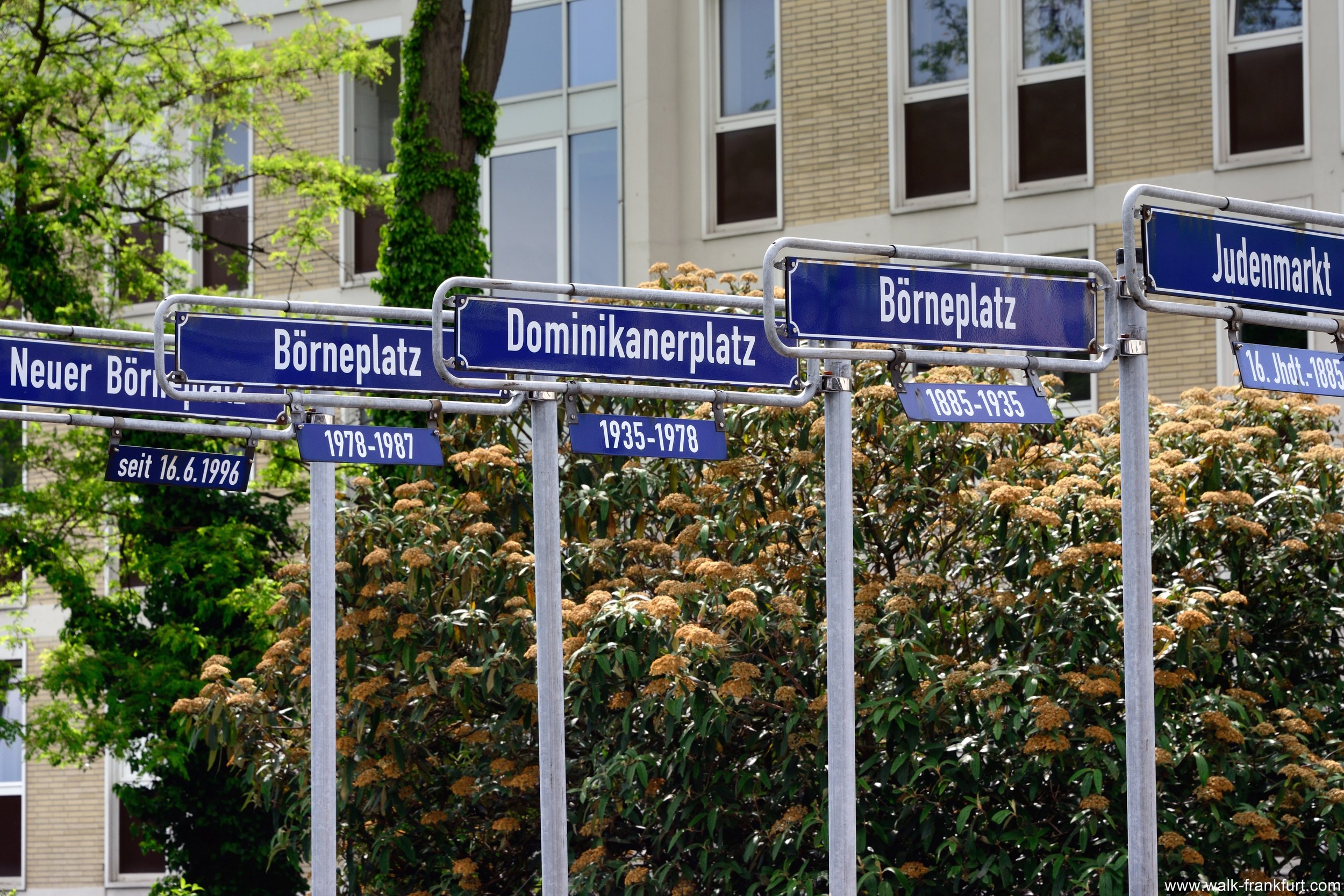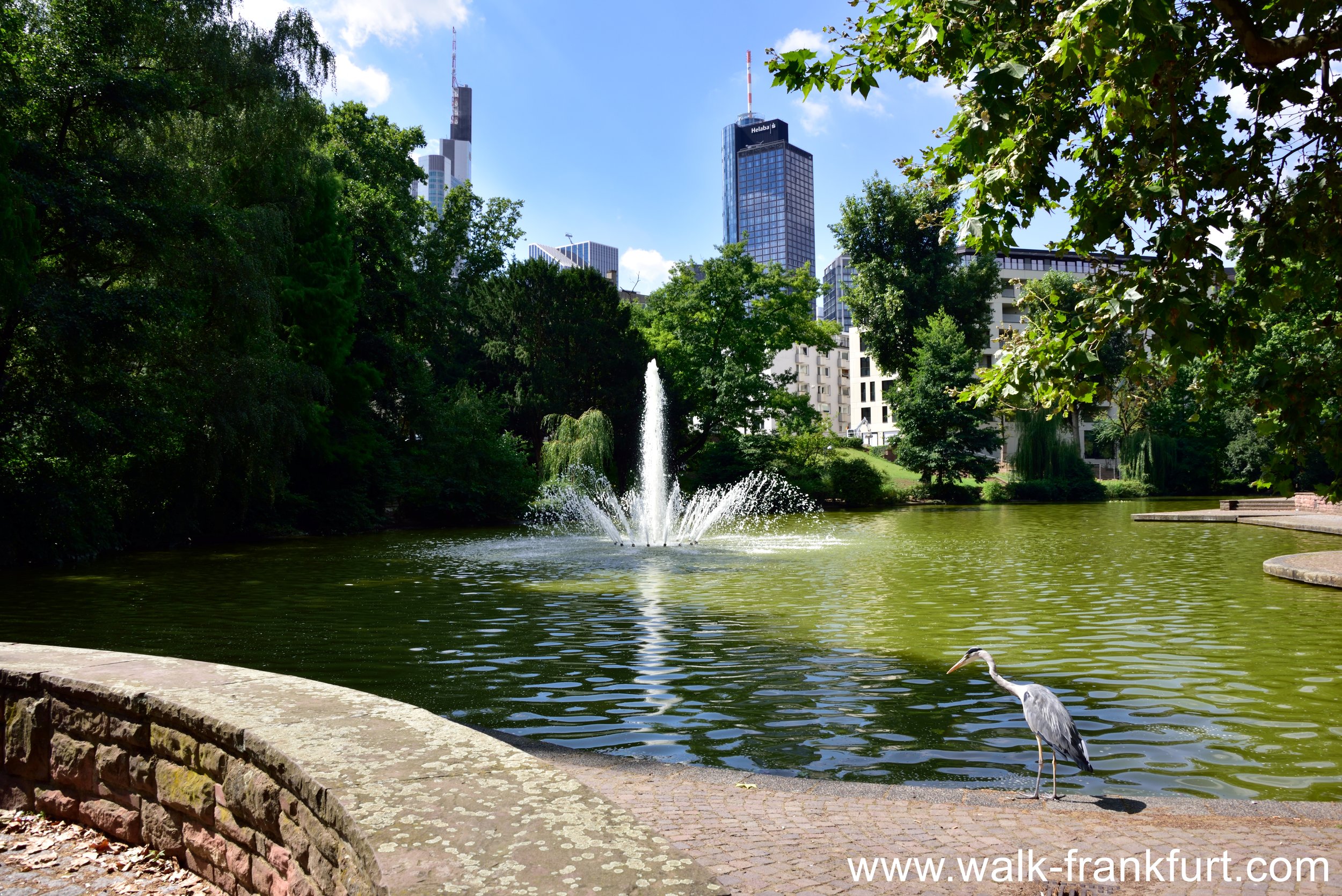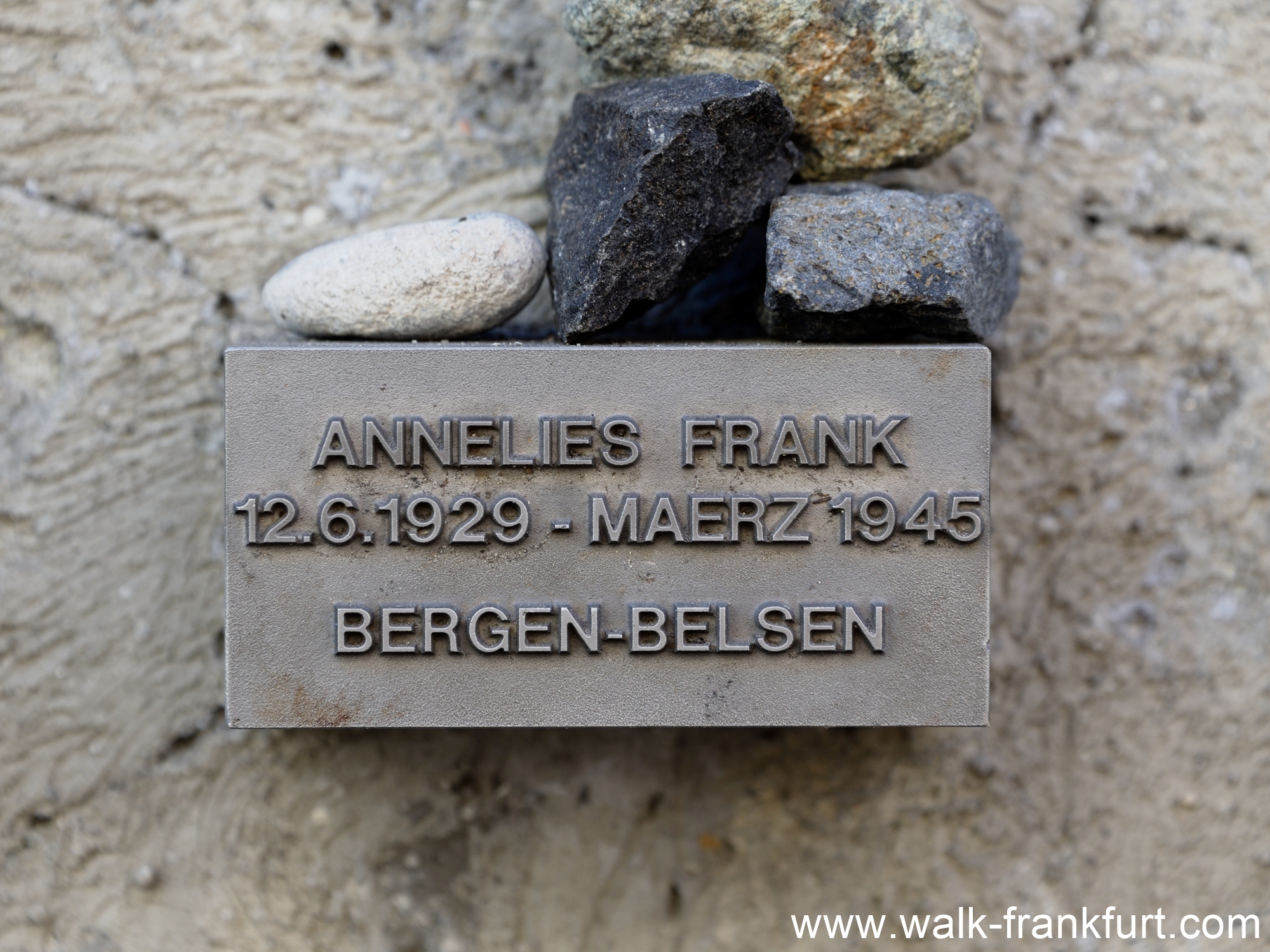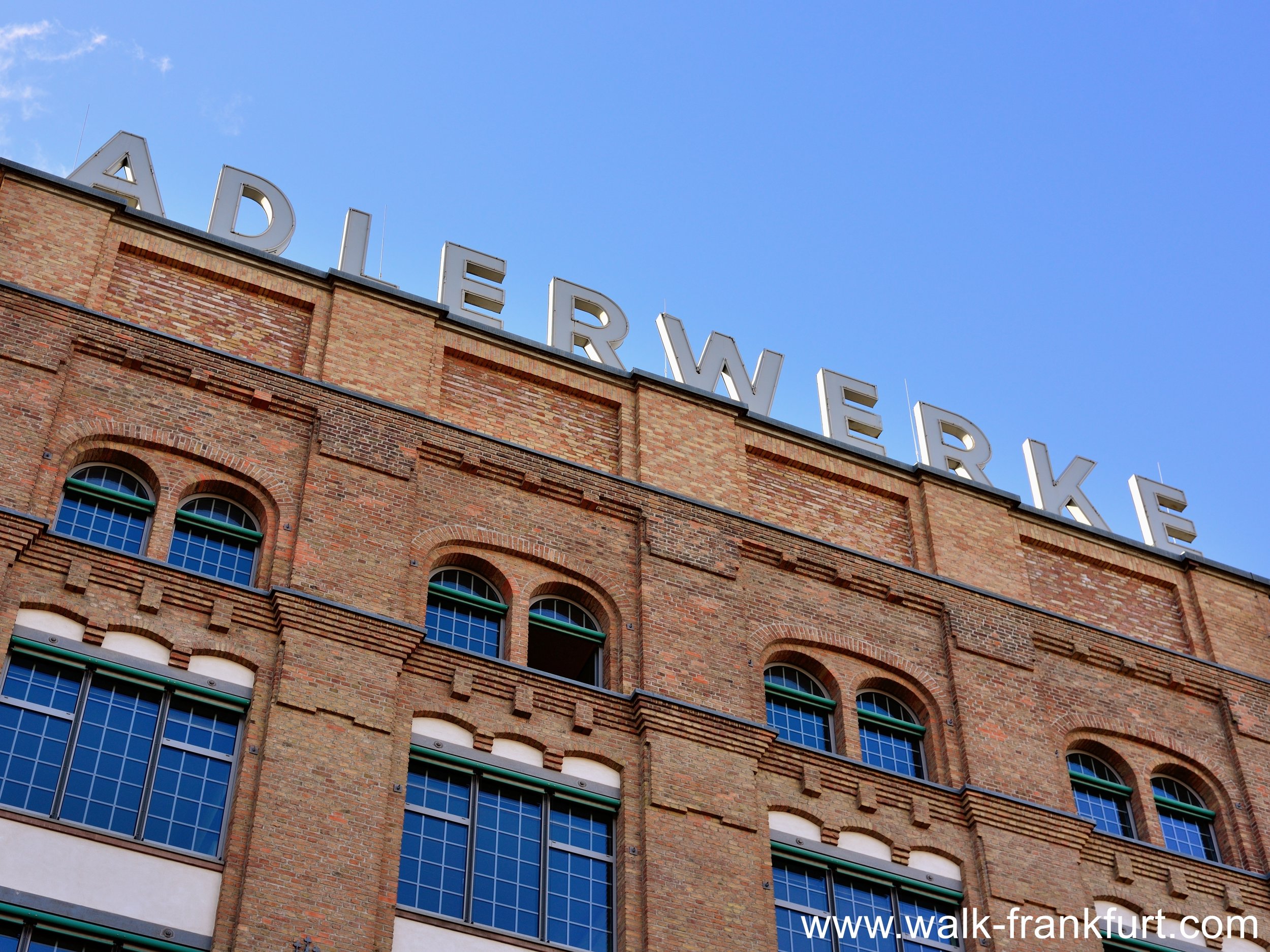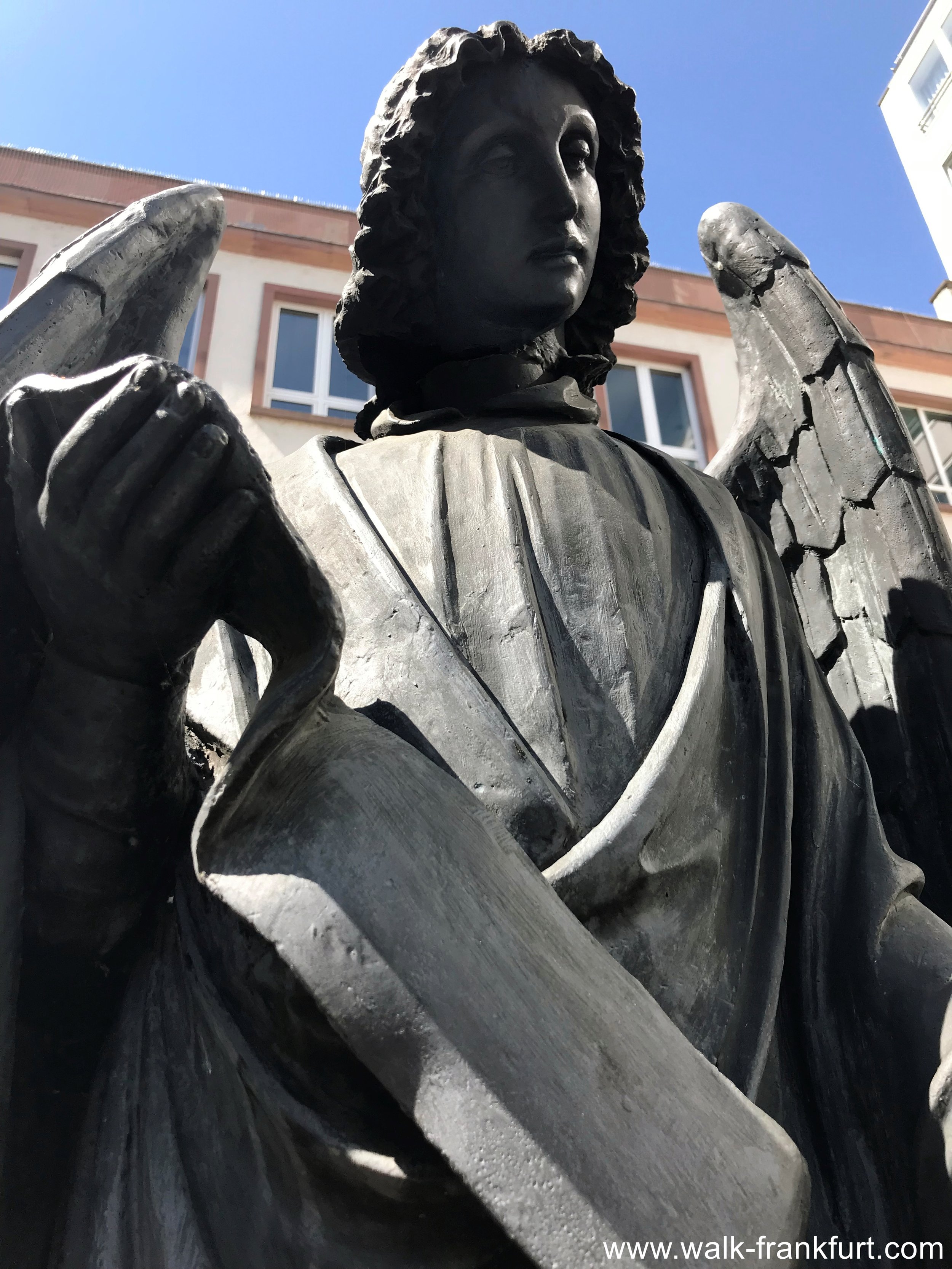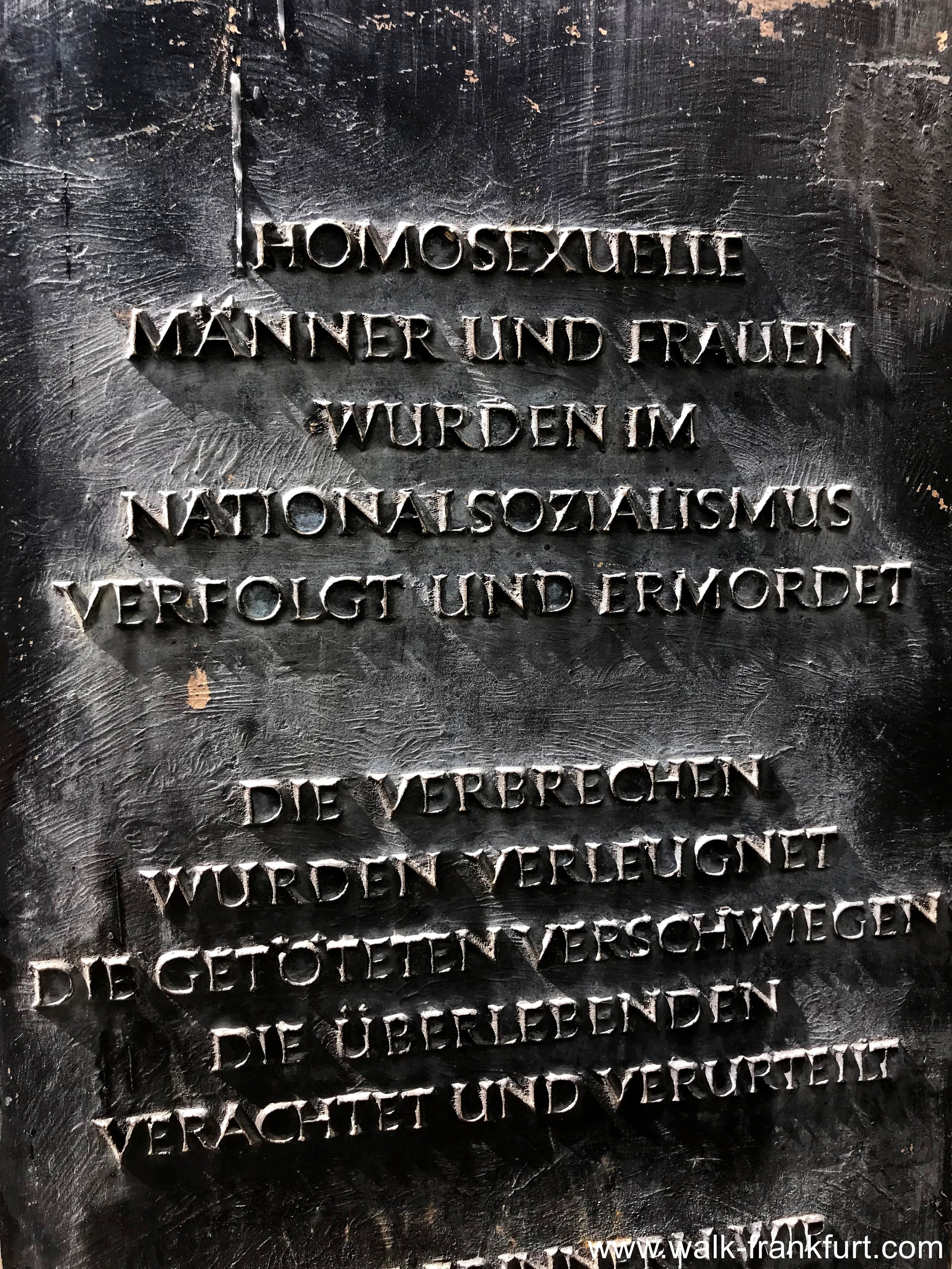Jewish history in Frankfurt
Frankfurt has a Jewish history dating back to at least the 12th century and there is some excellent information on the web to guide you to key cultural sites within Frankfurt, http://en.juedisches-frankfurt.de/
There are two museums in Frankfurt city centre dedicated to Jewish heritage in the city, both offering extensive information in English as well as German. The museum of the Jewish Ghetto, Batonnstrasse 47, displays the original foundation stones of the Frankfurt ghetto, first built in 1462. The Jewish Museum Frankfurt, Bertha-Pappenheim-Platz 1, has exhibits detailing Jewish life in Frankfurt from the 1800’s onwards.
In addition to these two central museums, is the Bildungsstätte Anne Frank, a small exhibit dedicated to Anne Frank, whose family lived in Frankfurt until they moved to Amsterdam to avoid the persecution of the National Socialist regime. This museum is easily accessible by taking the U-bahn (1,2,3 or 8) to Dornbusch. During my last visit they were exhibiting the original diary of Anne Frank.
An exhibit from the Bildungsstätte - Anne Frank in Frankfurt
As well as the information listed on web about Frankfurt Jewish culture there are some additional places to visit which have a Jewish connection. Up near the old opera house is the Rothschildpark, situated on land where the Rothschild's once lived. A placard by the park entrance, on Bockenheimer Landstraße, offers information and photos about the family home that once stood there.
Not far from Konstablerwache is a remnant of the old city wall, the Staufenmauer, dating back to the 12th century. It's also the north entrance to what used to be the Jewish ghetto, first constructed in 1462 and, up until 1815, Jewish residents were confined to living there. Today nothing exists of the old ghetto but walk through the old north entrance and head south towards the Jewish ghetto museum (Museum Judengasse) and you will be treading the path of where the ghetto used to stand.
Staufenmauer, the 12th century city wall and the entrance to the Jewish ghetto.
As you reach the Jewish ghetto museum, on the south east corner of Kurt-Schumacher-Straße and Battonstraße, look out for some brass plates laid into the ground with house names on them, e.g. Goldenes Schaf. The brass plates outline where some of the ghetto houses previously stood and are part of the museum exhibit. The entrance to the Jewish ghetto museum is 30 metres along Battonstraße and it is the ideal place to visit for more information about life in the ghetto.
Next door to the museum, is the old Jewish cemetery, in use from the 1200's through to the 1800's. Around the cemetery walls are listed almost 12,000 names, the names of the Jewish Frankfurt citizens murdered during the holocaust. Follow the wall to the south side and into the Neue Borne Platz, previously the old Jewish market place, today it is a permanent place of remembrance. If you wish to enter the cemetery a key can beborrowed from the museum, but only on production of a valid ID card.
A name Block from the Jewish cemetery wall memorial.
This link also gives details of the other two Jewish cemeteries in Frankfurt, which are both accessible via a short ride on the U-bahn.
In the heart of the old town, on Römerberg stands the Alte Nikolaikirche. Step inside and notice the colourful stained glass windows in the south wall and one to the west. These windows formerly belonged to Carl von Weinberg. Born into a Jewish family in the 1880's he converted to the evangelical faith however, because of his Jewish beginnings, the National Socialist regime reclassified Carl von Weinberg and forced him to sell his estate. The window's creator, Lena von Schauroth, took the windows for save keeping and in 1951 permission was given for the windows to be installed in the Alte Nikolaikirche. Another relic from the von Weinberg estate is the Florentine fountain, an original 16th century renaissance sculpture which can be found in the Wallanlage park, next to the Nebbiensches Gartenhaus.
The Wollheim memorial in the Goethe University grounds, Frankfurt.
The Goethe University grounds in the Westend, house the Wollheim memorial, dedicated to slave labourers forced to work at IG Farben during the second world war. The main university building is the former IG Farben headquarters. The public are free to walk around the university grounds which connect up with the Grüneburgpark, and the Botanical Gardens.
A tour of Frankfurt with Walk Frankfurt
A description of the typical sights that Frankfurt has to offer on Walk-Frankfurt walking tour.
There are lots of great things to do and see in Frankfurt. History lovers will enjoy the old town with stories dating back to Roman times, through the middle ages and into the 1800’s. The modern shopping heart of Frankfurt offers a wide variety of shops, quickly accessible by foot, and foodies will love the daily indoor grocery market and the farmers markets hosted at the end of the week.
To answer the frequently asked question, “what will I get to see on a tour?”, I’ve listed the sights below, and most popular tour duration’s, to help you decide what you would like to see on your tour.
A 90 minute tour
This tour focuses on the old town, but also brings you to the Zeil, the modern shopping heart of Frankfurt. The sights are:
Römerberg - the main square with the beautiful town hall. This is the heart of the old town.
River Main and Eisenersteg - views up and down the river including views of the European Central Bank (ECB) and other skyscrapers.
Haus Wirtheim - the only remaining, in tact, 17th century house on the Römerberg.
Alte Nikolai church - a small church with foundations from the 12th century and 20th century stained glass windows by Lina von Schauroth.
New old town - 35 newly developed buildings bring back to life a part of the old town destroyed in World War II.
Roman remains and the Holy Roman Emperors Kaiserpfalz - historic remains, highlighting the importance of Frankfurt throughout the centuries.
Kaiserdom - the Emperor’s cathedral. The place of the Holy Roman Empire elections and coronations.
Paulskirche - the starting point of German democracy. Open to the public from 10am - 5pm.
Kleinmarkthalle - the indoor market. The place to sample traditional Frankfurt boiled sausage and local wine too!
Hauptwache - the former 18th century police station and heart of Frankfurt’s modern shopping centre.
Deutsche Börse - the old stock exchange and formerly the heart of the banking quarter.
A 2 hour tour
A two hour tour includes the sights listed for the 90 minute tour and extends to include some of the options below. Unfortunately you won’t have time to visit all the options below, so it depends on what you would like to see:
Goethe’s house - literature fans will appreciate the chance to visit Goethe’s place of birth (although there is an entrance fee to visit inside.
Goetheplatz - a statue dedicated to the author and an area of “high-end” shopping.
Fressgass’ - a street of eateries and, in the summer, some great festivals.
Alte Oper - the old opera house. Beautiful renaissance architecture at the western end of the city centre.
Carmelite cloister - open to the public and displaying the 16th century fresco by Jörg Ratgeb.
*Outdoor markets - Konstablerwache and Schillerstrasse
*Farmer’s market are hosted from Thursday to Saturday. They offer a unique piece of Frankfurt life where you join the locals in a glass of apple wine and a bratwurst.
A 3 hour tour
A 3 hour tour will suit you if you want to take a more leisurely pace through the sights of Frankfurt, perhaps stopping for a coffee or even a glass of wine at the indoor market. If you are energetic, and want to achieve your 10,000 steps a day, in 3 hours you can cover all the sights above and also include:
Eschenheimer Tor - a remnant of the original medieval wall and a classic piece of 14th & 15th century architecture (the tower being attributed to Madern Gerthener)
Bockenheimer Anlage - a beautiful park, leading to the old opera house, following a path that used to be the 14th century city battlements.
Memorial to the Jewish victims of the holocaust - to the east of the city is the old Jewish cemetery and memorial.
International Holocaust Remembrance Day - January 27th
Eleven million victims
"By 1945, Germany had murdered over eleven million people in Europe: political prisoners, Roma, homosexuals, the disabled but in numerical terms, overwhelmingly - around six million - Jews." (MacGregor, 2014, p509)
I hope Neil MacGregor doesn't mind me opening a blog page with a quote from his excellent book, Germany: Memories of a Nation.
During my work as a tour guide the majority of people I meet, from all over the World, earnestly believe that 6 million people where murdered during the holocaust. It shocks them to discover the number was closer to 11 million and that there were other groups who were actively victimised with the ultimate aim of annihilation. Frankfurt commemorates all. Memorials have been erected by the local council, by artists, companies, societies and by families of the victims, which exist around the streets of the city and exhibits are regularly put on public display as timely reminders.
Stolperstein - Stumbling stones
By simply looking down on the ground you will sooner or later stumble upon a stumbling stone. Stumbling stones are an art initiative by Gunter Demnig, "...that commemorates the victims of National Socialism, keeping alive the memory of all Jews, Roma and Sinti, homosexuals, dissidents and Jehovah's Witnesses and victims of euthanasia who were deported and exterminated." The commemorative brass stones are placed in the ground outside the last chosen residence of the victim with the opening words, "Here lived...", followed by a short narrative of the victim's fate. Frankfurt has it's share of the 61,000 stumbling stones which can be found across Germany, Austria, Hungary, the Netherlands, Belgium, the Czech Republic, Norway and Ukraine.
Katharina Schmid's stumbling Stone (Stolperstein) murdered for being a Jehovah's Witness.
Adlerwerke "Katzbach" - the concentration camp in Frankfurt
During World War Two a concentration camp existed the centre of Frankfurt, KZ-Katzbach at the Adlerwerke. Up to 1,600 victims were worked to death and by March 1945, as the defeat of the Nazis became a reality, the workers who had survived the atrocious working conditions were sent on a death march to Buchenwald and thereafter onto Dachau. Amongst them were Polish people arrested after the Warsaw uprising and German objectors to the National Socialist government. On the Adlerwerke building today hangs a memorial plaque to those victims so they are not forgotten. More information about the camp, albeit in German, can be found on the official KZ-Alderwerke website.
Roma memorial
On Braubachstrasse, hanging on the wall by number 20, is a memorial dedicated to the Roma people of Frankfurt who fell victim to the racial policies of the Nazis. It's a simple memorial but, nevertheless, it is there detailing the murder and sterilisation of the Roma. Last summer I also had the privilege to meet a man tending a grave in the Frankfurt cemetery. As I paused to look he called me over and explained the grave, he was so lovingly caring for, was that of his grandmother, a Roma, incarcerated at a concentration camp and who had survived the holocaust.
The Grey Buses
Another poignant memorial is that to the physically and mentally disabled victims of the holocaust. The image of a grey bus symbolises the collection and deportation of disabled people, deemed unworthy by the National Socialists, to one of six killing centres in Germany. One of these killing centres was located 80km north of Frankfurt, in Hadamar. The organised euthanasia program, named Action T4, systematically murdered 70,000 people. However, it is believed institutions practised localised euthanasia and, in total, between 1939 and 1945 approximately 300,000 mentally and physically disabled people were murdered. The Grey Buses exhibitwas temporarily located in Frankfurt on Rathenauplatz/Goetheplatz in 2018.
The Frankfurter Engel
In 1994, the Frankfurter Engel was the first memorial in Germany to commemorate the persecution of homosexuals during the National socialist era. Men were targetted in greater numbers than women. Many were worked to death, others were forcibly experimented upon in order to find a "cure" for their condition. The Frankfurter Engel - the Frankfurter Angel, stands on the corner of Schäfergasse and Alte Gasse.
Jewish memorial at Neue Börneplatz
Since 1996 Neue Börneplatz, Frankfurt has been a dedicated memorial to the Jewish citizens who were murdered during the holocaust. The area was formerly the site of the Jewish market and the Börneplatz synagogue which was razed to the ground during Kristallnacht (11th November 1938). The wall around the old Jewish cemetery, also at this site, displays 11,915 steel plaques which individually name each and every Jewish citizen of Frankfurt who was exterminated.
Further out of the city centre are other Jewish memorials. The most recent is the at the European Central Bank (ECB). Part of the building structure makes use of a former warehouse which used as a collection point from where the local Jewish people were forced to board trains and deported to their deaths. The signal box and railway lines outside the building, on public land, have been left as a reminder of the deportations. Within the ECB building a stark concrete ramp leads to the basement of the building, the former the collection point, with inscriptions from the victims and observers.
Details of the other Jewish memorials can be found using this link to Jewish Sites in Frankfurt.





